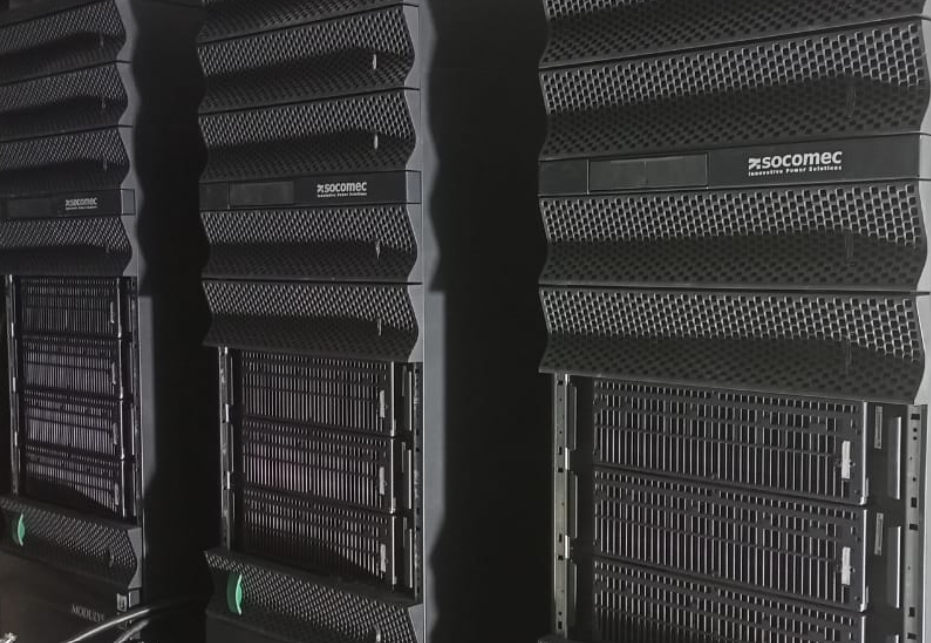Power management in data centers is currently undergoing a significant transformation with the advent of software-defined power (SDP) technology. This technology is revolutionizing energy management in data centers by leveraging advanced software to optimize energy usage, storage, and distribution. This article will discuss how software-defined power can optimize operational efficiency and reduce costs, as well as the importance of the role of a distributor UPS data center in implementing this technology.
What is Software-Defined Power?
Software-defined power (SDP) is similar to the concept of a software-defined data center (SDDC). SDP creates an abstraction layer that makes it easier to match power resources with changing data center needs. In this approach, power is treated as a virtual resource managed through a control plane, allowing it to be stored, used, capped, or even sold to meet varying demands, service levels, or policies.
Benefits of Software-Defined Power in Data Center Management
- Capex and Opex Cost Savings: Utilizing SDP technology allows data centers to significantly reduce capital expenditures (Capex) and operational expenditures (Opex). This is due to the ability to reduce the need for excessive physical equipment through dynamic power management.
- Better Energy Efficiency: Using software to manage power allows for more optimal energy usage. Data centers can operate infrastructure at higher utilization levels, reducing the need for expensive backup power systems.
- Flexibility in Load Management: With SDP, power loads can be moved, changed, or controlled at the data center, rack, server, or application level based on predefined policies and thresholds. This provides greater flexibility to respond to changing operational needs.
- Increased Reliability and Redundancy: Software-based N+1 or N+2 power architectures promise higher power utilization with relatively greater redundancy. This allows for load transfers between UPSs, creating a redundant/Concurrently Maintainable architecture.
The Role of a Distributor UPS Data Center in Implementing Software-Defined Power
Implementing software-defined power technology in data centers requires close collaboration with an experienced distributor UPS data center. Distributors like Climanusa play a vital role in providing UPS solutions compatible with SDP technology and offering the necessary technical support for seamless integration. Here are several reasons why the right distributor UPS data center is essential:
- Provision of Compatible Equipment and Solutions: A good UPS distributor will ensure that the UPS equipment they offer is compatible with SDP technology, such as modular UPS systems that can be controlled through software.
- Comprehensive Technical Support: Integrating SDP technology requires robust technical support, including installation, maintenance, and training. An experienced distributor will have a trained technical team to ensure smooth implementation.
- Consultation and Planning: The right UPS distributor will work with the data center team to design an optimal power solution. This includes evaluating power needs, designing suitable power architectures, and setting power utilization policies.
- Support for Integrated Power Monitoring and Control: With advancements in SDP technology, distributor UPS data centers also need to offer integrated power monitoring solutions. This is essential for enabling real-time power control and automated decision-making based on data analysis.
Challenges in Implementing Software-Defined Power
Despite its many benefits, implementing SDP in data centers still faces several challenges:
- System Complexity: SDP requires systems that can manage power in real-time with extremely fast response times. This means that integration between hardware and software must be seamless and reliable.
- Interoperability of Different Systems: Integrating various power resources and demands requires high interoperability between different systems, including data center infrastructure management (DCIM), IT service management (ITSM), and virtual machine management.
- Organizational Culture and Existing Investments: Many data centers have already made significant investments in traditional power architectures, and transitioning to SDP requires organizational culture changes and a reevaluation of existing investments.
- Unclear Return on Investment (ROI): In some regions where energy prices are low or energy regulations are unclear, measuring the ROI of implementing SDP can be challenging.
Conclusion
Software-defined power offers a revolutionary approach to managing data center power by optimizing energy usage, reducing costs, and increasing operational flexibility. However, its successful implementation heavily relies on collaboration with the right distributor UPS data center, such as Climanusa. Choosing the right distributor will not only ensure equipment compatibility but also support a smooth and sustainable implementation process.
At Climanusa, we understand the importance of efficient power management for modern data centers. As a leading Distributor UPS Data Center in Indonesia, we provide UPS solutions designed to support software-defined power technology and ensure reliable and cost-effective operations. Trust Climanusa for your data center power management needs and experience the benefits of our innovative solutions.
For more information, please click here.
–A.M.G–

